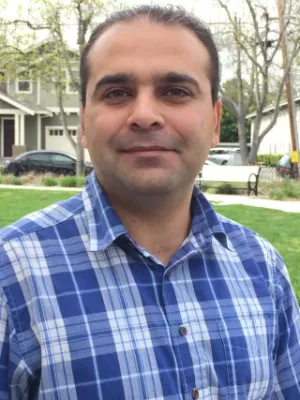
Hossein Hashemi
Researcher

Modeling artificial groundwater recharge by floodwater spreading: estimation, effect and enhancement
Author
Summary, in English
Artificial recharge (AR) is a method to balance and recover groundwater resources. AR has been the main and parsimonious solution for water scarcity problems in the arid and semiarid Middle East for thousands of years. This technique is increasingly being encouraged and at present there has been a renewed interest to find improved methods for AR in many arid countries. AR may be defined as augmenting the natural infiltration of surface water into underground formations by various techniques such as by spreading of water in infiltration basins or by artificially changing recharge conditions (Todd and Mays, 2005). Unconfined aquifers can be artificially recharged by spreading of water on the ground surface. AR by water spreading is practiced in 36 multipurpose floodwater spreading stations in Iran since 1983. The systems serve as sedimentation basins and infiltration ponds for the AR of groundwater and also as experimental plots for investigation of several problems such as sediment stabilization and afforestation (Kowsar, 1992). Due to water shortage in Gareh-Bygone Plain, arid south-eastern Iran, a Floodwater Spreading System (FWS) to artificially recharge the groundwater was established between 1983 and 1987 on about 2000 ha. This system is an inexpensive method for flood mitigation and AR of aquifers that results in a large economic return for relatively small investment.
Estimation of recharged water is a crucial subject in aquifer management. A variety of techniques are available to quantify recharge. However, choosing appropriate techniques is often difficult (Scanlon et al., 2002). In order to estimate the recharged water for a 14-year period, a 3D conceptual model was built to be representative of the study area and efficient estimation of hydraulic parameters. Groundwater flow was simulated and calibrated by MODFLOW-2000 based on monthly observed data during both steady and transient periods for the years between 1993 and 2007. The aquifer parameters including hydraulic conductivities, specific yield, and recharge rate were determined through calibration of model during steady state, unsteady state with no recharge, and unsteady state with recharge cases, respectively. The recharge amount varied from a few hundred thousand cubic meters per month during drought periods to about 4.5 million cubic meters per month during rainy periods.
This study aimed at assessing the effects of different strategies to improve the efficiency of the FWS using the above groundwater model. The study focused on spatial distribution of the system, change in the hydraulic structures and hydraulic parameters of the aquifer, and application of different abstraction scenarios in order to increase the efficiency and management of the system. The results will be used to better manage existing and plan new FWS projects in order to achieve sustainable water resources using an economical and efficient AR system in arid areas.
Estimation of recharged water is a crucial subject in aquifer management. A variety of techniques are available to quantify recharge. However, choosing appropriate techniques is often difficult (Scanlon et al., 2002). In order to estimate the recharged water for a 14-year period, a 3D conceptual model was built to be representative of the study area and efficient estimation of hydraulic parameters. Groundwater flow was simulated and calibrated by MODFLOW-2000 based on monthly observed data during both steady and transient periods for the years between 1993 and 2007. The aquifer parameters including hydraulic conductivities, specific yield, and recharge rate were determined through calibration of model during steady state, unsteady state with no recharge, and unsteady state with recharge cases, respectively. The recharge amount varied from a few hundred thousand cubic meters per month during drought periods to about 4.5 million cubic meters per month during rainy periods.
This study aimed at assessing the effects of different strategies to improve the efficiency of the FWS using the above groundwater model. The study focused on spatial distribution of the system, change in the hydraulic structures and hydraulic parameters of the aquifer, and application of different abstraction scenarios in order to increase the efficiency and management of the system. The results will be used to better manage existing and plan new FWS projects in order to achieve sustainable water resources using an economical and efficient AR system in arid areas.
Department/s
- Division of Water Resources Engineering
- Centre for Advanced Middle Eastern Studies (CMES)
- MECW: The Middle East in the Contemporary World
Publishing year
2012
Language
English
Document type
Conference paper
Topic
- Other Social Sciences
- Water Engineering
Keywords
- artificial recharge
- groundwater modeling
- MODFLOW
- recharge estimate
Conference name
Hydrogeology of Arid Environments
Conference date
2012-03-14 - 2012-03-17
Conference place
Hannover, Germany
Status
Published

